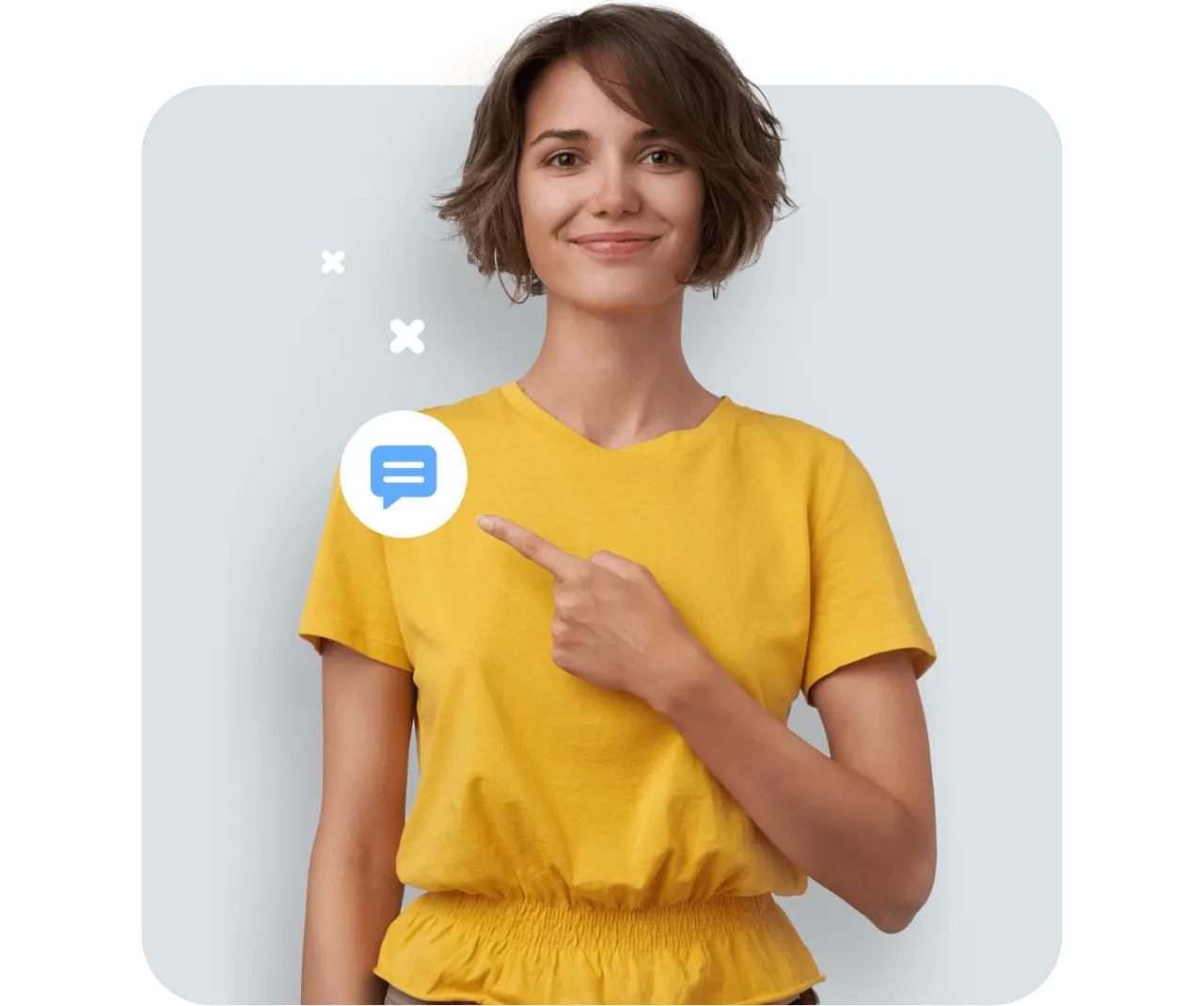Share article:
Your SMS glossary: 40+ common text messaging terms

Pop quiz. Hands up who knows what SMS stands for? If you answered, ‘Short Message Service’, you’re a winner. If you didn’t, don’t despair. SMS marketing is full of acronyms, and it can be hard to keep track of what’s what.
To make your life easier, we’ve created this go-to guide for all the words and phrases you need to know if you’re involved in SMS marketing.
A
ALPHA TAG: This is an approved 3-11 character name or string of text that appears in place of a phone number (for example, it could be your business name). Alpha tags are great for brand recognition, but can only be used for one-way messages.
API: An Application Programming Interface (API) allows two different software programs to talk to each other (kind of like an interpreter). MessageMedia has SMS API codes for all your favourite programming languages.
AUTO REPLIES: Also called an autoresponder, an automated text message is sent back to a customer following a certain action. For example, when a customer first subscribes, you could send an automated ‘welcome’ message.
B
BULK SMS: Like its name suggests, bulk SMS is where you send a single text message to a group of customers at the same time.
C
CHATBOX TO SMS: With chatbox to SMS, you can move chat conversations from your website to SMS, for more convenient and easy-to-use chat.
CTA: A call to action (CTA) is a prompt in your SMS that encourages a customer to take action, such as “Buy now” or “Learn more”.
CTR: The click-through rate (CTR) is the number of clicks your SMS gets, divided by the number of people you send the message to. If you send a message to 100 people and 65 click on it, your CTR is 65%. The higher the better.
CX: Customer experience (CX) is a qualitative measure of how customers interact with your business. Your ongoing goal is to boost CX – tips like these can help.
CUSTOM FIELDS: Use custom fields in your text messages to help boost CTR. Custom fields can include things like [first name], [business name], [product], [discount] and more. They make it easy to add personalisation to your MessageMedia text messages.
D
DEDICATED NUMBER: This is a virtual phone number your whole business can use to send SMS to customers. With a dedicated number, customers see the same mobile number from you, no matter who’s sending from your business.
DEDUPLICATION: Deduplication is a feature of our text messaging service, which helps ensure you don’t send the same message to the same customer twice.
DELIVERY RECEIPT: A delivery receipt (DR) confirms your message has been successfully delivered to your customer.
E
EMAIL TO SMS: Our Email to SMS service enables you to quickly and easily send text messages from your preferred email provider—you send the email to us, we convert it to a text message and send it to your customers.
F
G
GATEWAY: With an SMS gateway, you can send and receive text messages to and from SMS-capable devices, using global telecommunications networks. For example, MessageMedia’s Australian SMS gateway sends bulk SMS, MMS and mobile landing pages globally.
GEOTARGETING: This is where you segment your customers based on their location. You might send specific offers to people in one town, for example, or time the sending of your text messages based on different time zones.
GIF: Graphics Interchange Format (GIF) is a type of image file. Think of it like a ‘moving’ photo. You can add GIFs to MMS and mobile landing pages.
H
HLR LOOKUPS: With Home Location Register (HLR) lookups, you can quickly and easily clean your database to remove inactive, invalid, or unrecognisable numbers—so you only pay for messages delivered to actual customers.
I
INTEGRATION: This is a connection between different apps or platforms, so they can work seamlessly together. MessageMedia has a huge integrations marketplace to streamline and simplify your marketing.
J
JPEG: A JPEG’s a JPEG, right? Who knew that it stands for Joint Photographic Experts Group? This common image format, which compresses the file size while maintaining quality, is popular for MMS and mobile landing pages.
K
KEYWORD: In SMS marketing, a keyword is a word or phrase that can be used to trigger an automated response. Here’s an example of how keywords can help trigger an automated flow of messages.
L
M
MESSAGING PROVIDER: That’s us. MessageMedia is a messaging provider, giving you an easy-to-manage platform for all your SMS marketing.
MMS: Multimedia Messaging Service (MMS) is a type of text message that includes GIFs or images. It’s a proven way to help grab customers’ attention.
MOBILE LANDING PAGE: A mobile landing page, or SMS landing page, is a fully personalisable landing page you can send as a text, with clear CTAs to help drive results.
Want to give SMS a go?
Get a free trial with MessageMedia to check out our text messaging features.

N
NPS: Net Promoter Score (NPS) is a measure of whether a customer is likely to recommend your business, product, or service to others. Here’s an example of a business that uses SMS to grow NPS.
O
OPT-OUTS: If you’re sending promotional messages, you have to give customers the option of opting out of further marketing. In other words, unsubscribing from your SMS marketing list.
OMNICHANNEL MARKETING: The use of multiple marketing channels (like SMS, email, social, and paid ads) to reach customers.
OTT: Over-the-top (OTT) messaging is where you send and receive content over the internet, instead of by a standard carrier network.
P
PNG: Portable Network Graphics (PNG) is another common image format that compresses image files, ideal for sending via MMS.
PUSH NOTIFICATION: A little different from an SMS, a push notification is a pop-up message from an app that appears on a customer’s mobile device as a notification. Push notifications don’t use mobile carrier networks.
Q
QR CODE: This is a type of barcode that can be scanned by a mobile phone, and typically stores a web URL so customers can quickly scan and open your web page.
R
RCS: Rich Communication Services (RCS) combines the best of SMS and OTT to deliver richer, more engaging messages to customers’ mobile phones.
RICH MEDIA: This includes content like photos, videos, and audio, which can be sent via MMS.
ROI: Return on investment (ROI) is a measure of how well a tool or campaign performs (how much money it brings in) versus how much it costs you.
S
SCHEDULED MESSAGING: You can prepare SMS and MMS in advance, and then schedule their sending for a certain time and day. For example, you might send an automated appointment reminder 24 hours before an appointment.
SMS: We’ve got this one covered. Short Message Service (SMS) is a communications protocol for sending and receiving text messages over cellular networks.
SMS CHARACTER LIMIT: A standard SMS is 160 characters (these include letters, numbers, spaces, and symbols you’d see on a normal computer keyboard). You can send longer messages, however, it may use up more credit.
T
TEMPLATES: You can set up SMS templates, or pre-written text messages, to use again and again. Here are some examples of SMS templates.
TWO-WAY MESSAGING: Two-way SMS messaging is the ability to both send and receive text messages.
U
URL: A Uniform Resource Locator (URL) is the address of a website or webpage.
URL SHORTENER: To save on SMS credits, you can automatically shorten text message URLs to just 22 characters by using short trackable links—which also enable you to track who clicks on the link, and how many times.
V
W
WEB SMS: With a web SMS platform, you can send SMS from the web straight to your customers’ mobile phones. The online platform gives you an easy way to manage, personalise and automate your SMS marketing.
Z
Want more help with SMS?
Check out our resources hub for helpful articles, tips and guides for getting the most from SMS marketing. Or contact us to check out our features for yourself.
